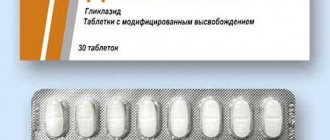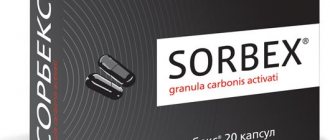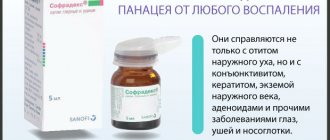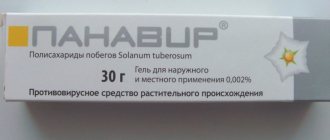Pregabalin is a medication that has anticonvulsant, analgesic and anti-anxiety effects. It is produced in capsules of different dosages - 25 mg, 50 mg, 75 mg, 100 mg, 150 mg and 300 mg by Russian and foreign pharmaceutical companies.
The drug is not prohibited in Russia, but is sold strictly according to a prescription and the supply of each unit in pharmacies is taken into account. Selling a medicine and its synonyms without a prescription is punishable by criminal liability. For mild symptoms, doctors prefer to prescribe Pregabalin analogues.
Characteristics of the drug
Pregabalin is a pharmacological drug that was previously freely sold in pharmacies. It was in demand among patients with epilepsy, acute pain in muscles and joints, and increased causeless anxiety. About 5 years ago, Pregabalin was sold upon presentation of a prescription from a doctor. And all because of the pronounced side effects - euphoria, lethargy, confusion. When combined with alcohol, auditory and visual hallucinations are common.
Release from pharmacies
Just a few years ago, dispensing structural analogues of Pregabalin was a headache for pharmacy employees. Pharmacists and pharmacists have encountered inappropriate behavior from clients with persistent drug addiction. Despite the fact that they were buying an expensive (about 1,000 rubles) drug on an industrial scale, sales were falling. It’s just that respectable citizens preferred not to visit pharmacies where drug addicts constantly shopped.
Not surprisingly, structural substitutes soon disappeared from the shelves. At first, pharmacies themselves stopped purchasing it in order to preserve their reputation. And then the Ministry of Health banned its sale without a prescription.
The reason is the sale of the drug to minors at parties and even in schools.
Now Pregabalin is a drug prohibited from free sale. But many pharmacies are still subject to huge fines for violating this law.
What are over-the-counter analogs intended for?
The main indication for the use of Pregabalin analogs is the relief of acute pain in the musculoskeletal system. They are used both as monotherapy and as part of complex treatment with narcotic and non-narcotic analgesics, non-steroidal anti-inflammatory drugs. The drugs help patients with the following pathological conditions:
- neuropathic pain, which is not a response to physical damage, but is associated with disturbances in the functioning of areas of the peripheral and central nervous systems;
- generalized anxiety disorders, which are manifested by increased nervous excitability, sleep disorders, depression;
- Fibromyalgia is a chronic pain syndrome characterized by musculoskeletal pain and the presence of specific points of increased sensitivity.
Substitutes are intended to eliminate partial epileptic seizures. They are most often used in combination with other anticonvulsants. The use of drugs is also recommended for the prevention of another attack of epilepsy.
Structural analogues of Pregabalin
In pharmacies, the free sale of not only Pregabalin, but also all its structural analogues is prohibited. This is the name for pharmacological drugs with identical active ingredients. Exact analogues of the drug:
- Lyrics
. A drug from German with a pronounced antiepileptic effect. It is characterized by accelerated absorption of the active ingredient due to the characteristics of the auxiliary composition; - Algerica
. Produced by the Croatian pharmaceutical factory PLIVA HRVATSKA in the form of capsules of various colors. The cost of Algerica is approximately the same as that of Pregabalin - 1000 rubles.
Relatively recently, the domestic pharmaceutical factory North Star began producing Pregabalin. The capsules contain pregabalin, but the auxiliary composition differs somewhat from the Hungarian drug. But this does not affect the therapeutic effectiveness of the drug. A doctor can prescribe Pregabalin to a patient, both imported and domestically produced.
Pregabalin or Lyrica – which is better?
Lyrica is an original medicine , imported. Pregabalin is a domestic substitute with low cost.
Which is better depends on each case individually. The composition includes the same component in equal dosage. It is believed that substitutes have a greater risk of adverse reactions, worse purification of raw materials and a different production technology.
Current substitutes
For the treatment of fibromyalgia, epilepsy, and anxiety disorders, there are many drugs similar in action to Pregabalin. They differ in active and additional ingredients, release form, and you can buy them without a prescription.
| A drug | Manufacturer | Active substance | Cost, in rubles |
| Diclofenac | OZON LLC, OJSC Tatkhimfarmpreparaty (Russia), Hemofarm (Serbia), Magistra C&C (Romania) | diclofenac | from 40 |
| Ketoprofen | Vertex, OZONE | ketoprofen | from 70 |
| Nimesulide | Atoll (Russia), Berezovsky Pharmaceutical Plant (Russia), Teva Pharmaceutical Industries (Israel), Obolenskoye (Russia) | nimesulide | from 70 |
| Neurodiclovit | GL Pharma (Austria) | pyridoxine hydrochloride, diclofenac sodium, thiamine hydrochloride, cyanocobalamin | from 200 |
| Noopept | Pharmstandard, Russia | N-phenylacetyl-L-propylglycine ethyl ester | from 300 |
All drugs are substitutes for Pregabalin, but rarely become the first choice in the treatment of epilepsy and neuropathic pain. They are safer and less likely to cause adverse reactions. But Pregabalin relieves the symptoms of pathologies better and faster and provides long-term remission.
Lyrics
Active substance:
Pregabalin*
Pharmgroup:
Antiepileptic drugs
Analogs for the active substance:No data on synonyms | Application area:Pain syndrome of non-rheumatic origin Pain syndrome with vertebrogenic lesions Pain syndrome in muscular and joint diseases Pain syndrome with neuralgia Pain syndrome from burns Pain syndrome in chronic inflammatory diseases of the musculoskeletal system Pain syndrome is mild or moderate Pain in the muscles Muscle soreness Muscle soreness during heavy physical activity Painful conditions of the musculoskeletal system Pain in the musculoskeletal system Muscle pain Pain at rest Muscle pain Temporal lobe epilepsy Temporal lobe seizures Muscle pain Musculoskeletal pain Generalized anxiety Generalized anxiety disorders Jacksonian seizures Myalgia Myofascial pain syndromes Muscle pain Muscle pain at rest Muscle pain Muscle pain of non-rheumatic origin Muscle pain of rheumatic origin Neuropathic pain Neuropathic pain Neuropathic pain Neuropathic pain Acute muscle pain Partial form of epilepsy Partial form of epilepsy Partial form of epilepsy Partial epilepsy Partial epilepsy Partial epilepsy Partial seizures Partial seizures Partial seizures Partial seizures with or without secondary generalization Partial seizure Partial seizure Partial seizure Partial seizure with simple symptoms Partial seizure with complex symptoms Partial seizure Partial seizure Partial seizure Partial seizure with localization of the focus in the subdominant hemisphere Partial tonic-clonic seizure Partial tonic-clonic seizure Partial tonic-clonic seizure Partial epileptic seizure Partial epileptic seizure Partial epileptic seizure Partial epileptic seizure Partial epileptic seizure Partial epileptic seizure Perioperative pain Peripheral neuropathy Subcortical localization of the focus of excitation Polyneuropathy Chronic relapsing polyneuropathy Peripheral nerve damage Partial seizure Radiation neuropathy Rheumatic pain Rheumatic pains Myofascial syndrome Anxious reaction Anxiety neurosis Moderate to severe pain Moderate or mild pain syndrome Moderate to severe pain syndrome Ear pain due to otitis media Fibromyalgia Phobic neurosis Focal epilepsy Focal seizures Focal seizures Focal seizure |
Over-the-counter analogues with antiepileptic action
Pregabalin analogues with powerful anticonvulsant activity are used in the treatment of epilepsy. But all of them are available only by prescription, as they are addictive. Pharmacies sell medicines that have a mild sedative and calming effect. They do not stop epileptic seizures, but prevent their occurrence. Over-the-counter substitutes for Pregabalin include the following pharmacological drugs:
- Novo-Passit;
- Noopept;
- Tenoten.
The list of natural over-the-counter analogues of Pregabalin includes herbal products with a sedative effect. Motherwort, valerian, and peony are good for calming. They are used as part of complex therapy for partial epilepsy. These drugs are also indicated for the elimination of anxiety disorders, like Pregabalin.
Herbal over-the-counter substitutes for Pregabalin normalize sleep and prevent the development of depressive conditions.
They cope with constant nervousness, trembling, muscle tension, sweating, palpitations, dizziness and discomfort in the solar plexus area.
pharmachologic effect
The Lyrica analogue Pregabalin has the following properties:
- anxiolytic or tranquilizing effect aimed at reducing anxiety, fear, irritability, restlessness and other signs of depression and anxiety disorder;
- relieves pain for neuropathy and fibromyalgia;
- has an anticonvulsant effect.
The medication and its synonyms are excreted by the kidneys, so dosage adjustment is necessary in patients with renal failure and patients over 65 years of age.
Non-prescription painkillers
The closest analogues of Pregabalin are narcotic analgesics, the free sale of which in pharmacies is strictly prohibited. Non-steroidal anti-inflammatory drugs can relieve acute pain. These over-the-counter substitutes are available as parenteral products, tablets, and ointments. But in terms of the power of analgesic action, only injection solutions with the following active ingredients are similar to Pregabalin:
- nimesulide;
- diclofenac;
- ketoprofen.
Over-the-counter substitutes for Pregabalin inhibit cyclooxygenase, an enzyme responsible for the synthesis of prostaglandins, bradykinins, and leukotrienes. They are the cause of all the discomfort with fibromyalgia. Nonsteroidal anti-inflammatory drugs eliminate not only muscle-bone pain, but also other characteristic symptoms of severe pathology. These are acute migraine-type headaches and restless legs syndrome.
Gabapentin or Pregabalin – which is better?
Gabapentin is a substitute for Pregabalin, used in the following cases:
- for neuropathy;
- partial seizures with and without secondary generalization;
- drug withdrawal;
- postherpetic neuralgia.
Does not cause euphoria or withdrawal symptoms.
Available under the following trade names:
- Gabagamma (Germany);
- Gabapentin (India, Russia);
- Catena (Croatia);
- Konvalis (Russia);
- Neurontin (original medicine, Germany);
- Tebantin (Hungary).
Analogues differ in price, manufacturer, technology used in production, degree of purification of raw materials, number of clinical studies and other factors.
For neuropathy, you can choose Pregabalin or Gabapentin, the advantage of the analogue is that it is not so strict with prescriptions (it is not stored in the organization) and is available in most pharmacies, there are fewer adverse reactions and the absence of withdrawal syndrome and euphoria.
Restrictions on treatment
An absolute contraindication to treatment with over-the-counter analogs of Pregabalin is individual intolerance to the active or excipient. Neurologists, psychiatrists, and psychotherapists do not prescribe them to patients when diagnosing them with the following pathologies:
- lack of lactase enzyme in the body;
- milk sugar intolerance;
- glucose-galactose malabsorption.
Some over-the-counter substitutes are not used if you have severe liver or kidney disease. The list of relative contraindications includes severe pathologies of the liver and kidneys, heart failure. Taking medications in childhood and adolescence is strictly prohibited. This is also true for patients who are pregnant or breastfeeding.
A doctor will never prescribe structural analogues of Pregabalin to a person if his medical history contains evidence of previously identified drug dependence.
Drugs provoke addiction quite quickly. People get used to euphoria, lethargy, and drowsiness, so it is difficult for them to refuse the drug.
Instructions:
Clinical and pharmacological group
02.011 (Anticonvulsant)
Release form, composition and packaging
Hard gelatin capsules, No. 4, with a white cap and body; the dosage and product code “PGN 25” are indicated on the body in black ink, “Pfizer” is indicated on the cap; the contents of the capsules are white to almost white powder.
| 1 caps. | |
| pregabalin | 25 mg |
Excipients: lactose monohydrate - 35 mg, corn starch - 20 mg, talc - 20 mg.
Composition of the capsule body: titanium dioxide - 2.4423%, gelatin - up to 100%. Composition of the capsule cap: titanium dioxide - 2.4423%, gelatin - up to 100%. Ink composition: shellac 24-27%, ethanol 23-26%, isopropanol 0.5- 3%, butanol 0.5-3%, propylene glycol 3-7%, concentrated ammonium solution 1-2%, potassium hydroxide 0.05-0.1%, purified water 15-18%, black iron oxide dye 24-28%.
10 pieces. - blisters (10) - cardboard packs. 14 pcs. - blisters (1) - cardboard packs. 14 pcs. - blisters (4) - cardboard packs. 21 pcs. - blisters (4) - cardboard packs.
Hard gelatin capsules, No. 3, with a white cap and a white body with a black stripe; the dosage and product code “PGN 50” are indicated on the body in black ink, “Pfizer” is indicated on the cap; the contents of the capsules are white to almost white powder.
| 1 caps. | |
| pregabalin | 50 mg |
Excipients: lactose monohydrate - 70 mg, corn starch - 40 mg, talc - 40 mg.
Composition of the capsule body: titanium dioxide - 2.4423%, gelatin - up to 100%. Composition of the capsule cap: titanium dioxide - 2.4423%, gelatin - up to 100%. Ink composition: shellac 24-27%, ethanol 23-26%, isopropanol 0.5- 3%, butanol 0.5-3%, propylene glycol 3-7%, concentrated ammonium solution 1-2%, potassium hydroxide 0.05-0.1%, purified water 15-18%, black iron oxide dye 24-28%.
10 pieces. - blisters (10) - cardboard packs. 14 pcs. - blisters (1) - cardboard packs. 14 pcs. - blisters (4) - cardboard packs. 21 pcs. - blisters (4) - cardboard packs.
Hard gelatin capsules, No. 4, with a red-brown to dark red-brown cap and a white body; the dosage and product code “PGN 75” are indicated on the body in black ink, “Pfizer” is indicated on the cap; the contents of the capsules are white to almost white powder.
| 1 caps. | |
| pregabalin | 75 mg |
Excipients: lactose monohydrate - 8.25 mg, corn starch - 8.375 mg, talc - 8.375 mg.
Composition of the capsule body: titanium dioxide - 2.4423%, gelatin - up to 100%. Composition of the capsule cap: red iron oxide dye - 1.7361%, titanium dioxide - 0.409%, gelatin - up to 100%. Ink composition: shellac 24-27%, ethanol 23-26%, isopropanol 0.5-3%, butanol 0.5-3%, propylene glycol 3-7%, concentrated ammonium solution 1-2%, potassium hydroxide 0.05-0.1%, purified water 15-18%, iron dye black oxide 24 -28%.
10 pieces. - blisters (10) - cardboard packs. 14 pcs. - blisters (1) - cardboard packs. 14 pcs. - blisters (4) - cardboard packs. 21 pcs. - blisters (4) - cardboard packs.
Hard gelatin capsules, No. 3, with a cap and body from red-brown to dark red-brown; the dosage and product code “PGN 100” are indicated on the body in black ink, “Pfizer” is indicated on the cap; the contents of the capsules are white to almost white powder.
| 1 caps. | |
| pregabalin | 100 mg |
Excipients: lactose monohydrate - 11 mg, corn starch - 11.17 mg, talc - 11.17 mg.
Composition of the capsule body: red iron oxide dye - 1.7361%, titanium dioxide - 0.409%, gelatin - up to 100%. Composition of the capsule cap: titanium dioxide - 0.409%, gelatin - up to 100%. Ink composition: shellac 24-27%, ethanol 23-26%, isopropanol 0.5-3%, butanol 0.5-3%, propylene glycol 3-7%, concentrated ammonium solution 1-2%, potassium hydroxide 0.05-0.1%, purified water 15-18%, iron dye black oxide 24 -28%.
10 pieces. - blisters (10) - cardboard packs. 14 pcs. - blisters (1) - cardboard packs. 14 pcs. - blisters (4) - cardboard packs. 21 pcs. - blisters (4) - cardboard packs.
Hard gelatin capsules, No. 2, with a white cap and body; the dosage and product code “PGN 150” are indicated on the body in black ink, “Pfizer” is indicated on the cap; the contents of the capsules are white to almost white powder.
| 1 caps. | |
| pregabalin | 150 mg |
Excipients: lactose monohydrate - 16.5 mg, corn starch - 16.75 mg, talc - 16.75 mg.
Composition of the capsule body: titanium dioxide - 2.4423%, gelatin - up to 100%. Composition of the capsule cap: titanium dioxide - 2.4423%, gelatin - up to 100%. Ink composition: shellac 24-27%, ethanol 23-26%, isopropanol 0.5- 3%, butanol 0.5-3%, propylene glycol 3-7%, concentrated ammonium solution 1-2%, potassium hydroxide 0.05-0.1%, purified water 15-18%, black iron oxide dye 24-28%.
10 pieces. - blisters (10) - cardboard packs. 14 pcs. - blisters (1) - cardboard packs. 14 pcs. - blisters (4) - cardboard packs. 21 pcs. - blisters (4) - cardboard packs.
Hard gelatin capsules, No. 1, with a cap and body from light red-brown to red-brown; the dosage and product code “PGN 200” are indicated on the body in black ink, “Pfizer” is indicated on the cap; the contents of the capsules are white to almost white powder.
| 1 caps. | |
| pregabalin | 200 mg |
Excipients: lactose monohydrate - 22 mg, corn starch - 22.33 mg, talc - 22.33 mg.
Composition of the capsule body: red iron oxide dye - 0.4398%, titanium dioxide - 0.4144%, gelatin - up to 100%. Capsule cap composition: red iron oxide dye - 0.4398%, titanium dioxide - 0.4144%, gelatin - up to 100%. Ink composition : shellac 24-27%, ethanol 23-26%, isopropanol 0.5-3%, butanol 0.5-3%, propylene glycol 3-7%, concentrated ammonium solution 1-2%, potassium hydroxide 0.05-0.1%, purified water 15- 18%, black iron oxide dye 24-28%.
10 pieces. - blisters (10) - cardboard packs. 14 pcs. - blisters (1) - cardboard packs. 14 pcs. - blisters (4) - cardboard packs. 21 pcs. - blisters (4) - cardboard packs.
Hard gelatin capsules, No. 0, with a red-brown to dark red-brown cap and a white body; the dosage and product code “PGN 300” are indicated on the body in black ink, “Pfizer” is indicated on the cap; the contents of the capsules are white to almost white powder.
| 1 caps. | |
| pregabalin | 300 mg |
Excipients: lactose monohydrate - 33 mg, corn starch - 33.5 mg, talc - 33.5 mg.
Composition of the capsule body: titanium dioxide - 2.4423%, gelatin - up to 100%. Composition of the capsule cap: red iron oxide dye - 0.7361%, titanium dioxide - 0.409%, gelatin - up to 100%. Ink composition: shellac 24-27%, ethanol 23-26%, isopropanol 0.5-3%, butanol 0.5-3%, propylene glycol 3-7%, concentrated ammonium solution 1-2%, potassium hydroxide 0.05-0.1%, purified water 15-18%, iron dye black oxide 24 -28%.
10 pieces. - blisters (10) - cardboard packs. 14 pcs. - blisters (1) - cardboard packs. 14 pcs. - blisters (4) - cardboard packs. 21 pcs. - blisters (4) - cardboard packs.
pharmachologic effect
An antiepileptic drug, the active substance of which is an analogue of gamma-aminobutyric (gamma-aminobutyric) acid (GABA).
It was found that pregabalin binds to the accessory subunit (α2-delta protein) of voltage-gated calcium channels in the central nervous system, irreversibly replacing [3H]-gabapentin. It is assumed that such binding may contribute to the manifestation of its analgesic and anticonvulsant effects.
Neuropathic pain
The effectiveness of pregabalin has been noted in patients with diabetic neuropathy and postherpetic neuralgia. Efficacy in other types of neuropathic pain has not been studied.
It has been established that when taking pregabalin in courses of up to 13 weeks, 2 times a day, and up to 8 weeks, 3 times a day, in general, the risk of side effects and the effectiveness of the drug when taken 2 or 3 times a day are the same.
When taken for a course of up to 13 weeks, pain decreased during the first week, and the effect persisted until the end of treatment.
There was a 50% reduction in pain scores in 35% of patients receiving pregabalin and in 18% of patients receiving placebo. Among patients who did not experience drowsiness, the effect of this pain reduction was observed in 33% of patients in the pregabalin group and 18% of patients in the placebo group. Somnolence occurred in 48% of patients receiving pregabalin and 16% of patients receiving placebo.
Fibromyalgia
A marked reduction in pain symptoms associated with fibromyalgia is observed with the use of pregabalin in doses from 300 mg to 600 mg per day. The effectiveness of doses of 450 and 600 mg per day is comparable, but the tolerability of the 600 mg/day dose is usually worse. Also, the use of pregabalin is associated with a noticeable improvement in the functional activity of patients and a decrease in the severity of sleep disorders. The use of pregabalin at a dose of 600 mg/day led to a more pronounced improvement in sleep compared with a dose of 300-450 mg/day.
Epilepsy
When taking the drug for 12 weeks 2 or 3 times a day, the noted risk of side effects and the effectiveness of the drug with these dosage regimens are the same. A decrease in seizure frequency began within the first week.
Generalized anxiety disorder
A decrease in the symptoms of generalized anxiety disorder is observed in the first week of treatment. When used for 8 weeks, 52% of patients receiving pregabalin and 38% of patients receiving placebo had a 50% reduction in Hamilton Anxiety Scale (HAM-A) symptoms.
Pharmacokinetics
The pharmacokinetics of pregabalin in the range of recommended daily doses is linear, interindividual variability is low (<20%). The pharmacokinetics of the drug upon repeated use can be predicted based on single dose data. Therefore, there is no need for regular monitoring of pregabalin concentrations.
The pharmacokinetic parameters of pregabalin at steady state in healthy volunteers, in patients with epilepsy receiving antiepileptic therapy, and in patients receiving it for chronic pain syndromes were similar.
Suction
Pregabalin is rapidly absorbed after oral administration on an empty stomach. Cmax in plasma is achieved after 1 hour with both single and repeated use. The oral bioavailability of pregabalin is ≥ 90% and is independent of dose. With repeated use, the equilibrium state is achieved after 24-48 hours. When using the drug after a meal, Cmax is reduced by approximately 25-30%, and the time to reach Cmax increases to approximately 2.5 hours. However, food intake does not have a clinically significant effect on the overall absorption of pregabalin.
Distribution
Vd of pregabalin after oral administration is approximately 0.56 l/kg. The drug does not bind to plasma proteins.
Metabolism
Pregabalin is practically not metabolized. After taking labeled pregabalin, approximately 98% of the radioactive tracer was detected in the urine unchanged. The proportion of N-methylated pregabalin derivative, which is the main metabolite found in urine, was 0.9% of the dose. There was no evidence of racemization of the S-enantiomer of pregabalin into the R-enantiomer.
Removal
Pregabalin is excreted mainly unchanged by the kidneys. The average T1/2 is 6.3 hours. Plasma clearance of pregabalin and renal clearance are directly proportional to QC.
Pharmacokinetics in special clinical situations
Patient gender does not have a clinically significant effect on plasma pregabalin concentrations.
If renal function is impaired, it should be taken into account that the clearance of pregabalin is directly proportional to the clearance of creatinine. Due to the fact that the drug is mainly excreted by the kidneys, in case of impaired renal function it is recommended to reduce the dose of pregabalin. In addition, pregabalin is effectively removed from plasma during hemodialysis (after a 4-hour hemodialysis session, plasma pregabalin concentrations are reduced by approximately 50%), and an additional dose of the drug must be prescribed after hemodialysis.
The pharmacokinetics of pregabalin in patients with impaired liver function have not been specifically studied. Pregabalin is practically not metabolized and is excreted mainly unchanged in the urine, so impaired liver function should not significantly alter plasma concentrations of the drug.
When prescribing the drug to elderly patients (over 65 years of age), it should be taken into account that the clearance of pregabalin tends to decrease with age, which reflects an age-related decrease in CC. Elderly people with impaired renal function may need to reduce the dose of the drug.
Dosage
The drug should be taken orally, regardless of food intake, in a daily dose of 150 to 600 mg in 2 or 3 divided doses.
For neuropathic pain, treatment begins with a dose of 150 mg/day. Depending on the achieved effect and tolerability, after 3-7 days the dose can be increased to 300 mg/day, and if necessary, after another 7 days - to a maximum dose of 600 mg/day.
For epilepsy, treatment begins with a dose of 150 mg/day. Taking into account the achieved effect and tolerability, after 1 week the dose can be increased to 300 mg/day, and after another week - to a maximum dose of 600 mg/day.
For fibromyalgia, treatment begins with a dose of 75 mg 2 times / day (150 mg / day). Depending on the effect achieved and tolerability, after 3-7 days the dose can be increased to 300 mg/day. If there is no positive effect, the dose is increased to 450 mg/day, and if necessary, after another 7 days - to a maximum dose of 600 mg/day.
For generalized anxiety disorder, treatment begins with a dose of 150 mg/day. Depending on the effect achieved and tolerability, after 7 days the dose can be increased to 300 mg/day. If there is no positive effect, the dose is increased to 450 mg/day, and if necessary, after another 7 days - to a maximum dose of 600 mg/day.
Discontinuation of Lyrica®: If treatment must be discontinued, it is recommended that this be done gradually over a period of at least 1 week.
For patients with impaired renal function, the dose is selected individually taking into account CC (table), which is calculated using the following formula:
For men weighing >60 kg:
CC (ml/min) = (body weight in kg) x (140 - age in years) / 72 x serum creatinine (mg/dl)
For women:
CC (ml/min) = CC value for men x 0.85
In patients on hemodialysis, the daily dose of pregabalin is adjusted based on renal function. Immediately after each 4-hour hemodialysis session, an additional dose is prescribed (table).
Selection of the dose of pregabalin taking into account renal function.
| CC (ml/min) | Daily dose of pregabalin | Frequency of intake per day | |
| Starting dose (mg/day) | Maximum dose (mg/day) | ||
| ≥60 | 150 | 600 | 2-3 |
| ≥30 — <60 | 75 | 300 | 2-3 |
| ≥15 — <30 | 25-50 | 150 | 1-2 |
| <15 | 25 | 75 | 1 |
| Additional dose after dialysis | |||
| 25 mg | 100 mg | One time | |
In patients with impaired liver function, no dose adjustment is required.
Elderly patients (over 65 years of age) may require a reduction in the dose of pregabalin due to decreased renal function.
If you miss a dose of pregabalin, take the next dose as soon as possible, but do not take the missed dose if it is almost time for the next one.
Overdose
Symptoms: with an overdose of the drug (up to 15 g), no adverse reactions not described above were recorded. During post-marketing use, the most commonly observed mood disorders were somnolence, confusion, depression, agitation and restlessness.
Treatment: gastric lavage, supportive therapy and, if necessary, hemodialysis.
Drug interactions
Pregabalin is excreted in urine mainly unchanged, undergoes minimal metabolism in humans (less than 2% of the dose is excreted in the form of metabolites in urine), does not inhibit the metabolism of other drugs in vitro and does not bind to plasma proteins, so it is unlikely to enter into pharmacokinetic interaction.
There was no evidence of clinically significant pharmacokinetic interactions between pregabalin and phenytoin, carbamazepine, valproic acid, lamotrigine, gabapentin, lorazepam, oxycodone and ethanol. It has been established that oral hypoglycemic drugs, diuretics, insulin, phenobarbital, tiagabine and topiramate do not have a clinically significant effect on the clearance of pregabalin.
When oral contraceptives containing norethisterone and/or ethinyl estradiol were used concomitantly with pregabalin, the steady-state pharmacokinetics of both drugs did not change.
Cases of respiratory failure and coma have been reported when pregabalin was used concomitantly with other CNS depressants.
Pregabalin has also been reported to have a negative effect on the gastrointestinal tract (including the development of intestinal obstruction, paralytic ileus, constipation) when used concomitantly with drugs that cause constipation (such as non-narcotic analgesics).
Repeated oral administration of pregabalin with oxycodone, lorazepam, or ethanol did not have a clinically significant effect on breathing. Pregabalin appears to enhance cognitive and motor impairment caused by oxycodone. Pregabalin may enhance the effects of ethanol and lorazepam.
Use during pregnancy and lactation
There are no adequate data on the use of pregabalin during pregnancy.
In experimental studies on animals, the drug had a toxic effect on reproductive function.
Therefore, Lyrica® should only be used during pregnancy if the expected benefit to the mother clearly outweighs the possible risk to the fetus.
When using Lyrica®, women of reproductive age should use adequate methods of contraception.
There is no information on the excretion of pregabalin into breast milk in women. However, experimental studies have found that it is excreted in breast milk in rats. In this regard, it is recommended to stop breastfeeding during treatment with Lyrica®.
Side effects
In clinical experience with pregabalin in more than 12,000 patients, the most common adverse events were dizziness and somnolence. The observed effects were usually mild or moderate. The discontinuation rates of pregabalin and placebo due to adverse reactions were 14% and 7%, respectively. The main adverse effects requiring discontinuation of treatment were dizziness (4%) and drowsiness (3%), depending on their subjective tolerability. Other side effects that also led to drug discontinuation: ataxia, confusion, asthenia, impaired attention, blurred vision, impaired coordination, peripheral edema.
The frequency of these adverse reactions exceeded that in the placebo group (observed in more than 1 person) and could be associated with the underlying disease and/or concomitant therapy. Determination of the frequency of adverse reactions: very often (>1/10), often (>1/100, <1/10), infrequently (>1/1000, <1/100), rarely (<1/1000).
| Infections and infestations: | |
| infrequently | nasopharyngitis |
| From the hematopoietic system: | |
| rarely | neutropenia |
| From the side of metabolism: | |
| often | increased appetite, weight gain |
| infrequently | anorexia, hypoglycemia |
| rarely | weight loss |
| From the mental side: | |
| often | euphoria, confusion, decreased libido, irritability, insomnia, disorientation |
| infrequently | depersonalization, anorgasmia, anxiety, depression, agitation, mood lability, depressed mood, difficulty finding words, hallucinations, unusual dreams, increased libido, panic attacks, apathy, increased insomnia |
| rarely | disinhibition, high spirits |
| From the nervous system: | |
| Often | dizziness, drowsiness |
| often | ataxia, impaired attention, impaired coordination, memory impairment, tremor, dysarthria, paresthesia, imbalance, amnesia, sedation, lethargy |
| infrequently | cognitive disorders, hypoesthesia, nystagmus, speech impairment, myoclonic convulsions, weakened reflexes, dyskinesia, psychomotor agitation, postural dizziness, hyperesthesia, loss of taste, burning sensation on the mucous membranes and skin, intention tremor, stupor, fainting |
| rarely | hypokinesia, parosmia, dysgraphia |
| From the side of the organ of vision: | |
| often | blurred vision, diplopia |
| infrequently | narrowing of visual fields, decreased visual acuity, eye pain, asthenopia, dry eyes, eye swelling, increased lacrimation |
| rarely | flashing sparks before the eyes, eye irritation, mydriasis, oscillopsia (subjective sensation of vibration of the objects in view), impaired perception of depth of vision, loss of peripheral vision, strabismus, increased brightness of visual perception |
| From the organ of hearing and vestibular apparatus: | |
| often | dizziness |
| infrequently | hyperacusis |
| From the cardiovascular system: | |
| infrequently | tachycardia, first degree AV block, hot flashes, decreased blood pressure, cold extremities, increased blood pressure |
| rarely | sinus tachycardia, sinus arrhythmia, sinus bradycardia |
| From the respiratory system: | |
| infrequently | shortness of breath, dry nasal mucosa |
| rarely | nasal congestion, nosebleeds, rhinitis, snoring, tightness in the throat |
| From the digestive system: | |
| often | dry mouth, constipation, vomiting, flatulence, bloating |
| infrequently | increased salivation, gastroesophageal reflux, hypoesthesia of the oral mucosa |
| rarely | ascites, dysphagia, pancreatitis |
| Dermatological reactions: | |
| infrequently | skin hyperemia, sweating, papular rash |
| rarely | cold sweat, hives |
| From the musculoskeletal system: | |
| infrequently | muscle twitching, joint swelling, muscle spasms, myalgia, arthralgia, back pain, limb pain, muscle stiffness |
| rarely | neck muscle spasm, neck pain, rhabdomyolysis |
| From the urinary system: | |
| infrequently | dysuria, urinary incontinence |
| rarely | oliguria, renal failure |
| From the reproductive system: | |
| often | erectile disfunction |
| infrequently | delayed ejaculation, sexual dysfunction |
| rarely | amenorrhea, pain in the mammary glands, discharge from the mammary glands, dysmenorrhea, enlargement of the mammary glands |
| From the laboratory parameters: | |
| infrequently | increased activity of ALT, AST, CPK, decreased platelet count |
| rarely | increased levels of glucose and creatinine in the blood, decreased levels of potassium in the blood, decreased number of leukocytes in the blood |
| Other: | |
| often | fatigue, peripheral edema, feeling of intoxication, gait disturbance |
| infrequently | asthenia, falls, thirst, chest tightness, generalized edema, chills, pain |
| rarely | hyperthermia |
Side effects noted during post-marketing surveillance (frequency unknown):
From the nervous system: headache, loss of consciousness, cognitive impairment, convulsions.
From the digestive system: rarely - swelling of the tongue, nausea, diarrhea.
From the organ of vision: keratitis, loss of vision.
Dermatological reactions: rarely - itchy skin, Stevens-Johnson syndrome.
Allergic reactions: angioedema (including facial swelling), hypersensitivity.
From the cardiovascular system: chronic heart failure, prolongation of the QT interval.
From the urinary system: urinary retention.
From the respiratory system: pulmonary edema.
From the reproductive system: gynecomastia.
Other: increased fatigue.
Storage conditions and periods
The drug should be stored out of reach of children, in a dry place at a temperature not exceeding 25°C. Shelf life: 3 years.
Indications
Neuropathic pain:
- treatment of neuropathic pain in adults.
Epilepsy:
- as an adjunctive therapy in adults with partial seizures, with or without secondary generalization.
Generalized anxiety disorder:
- treatment of generalized anxiety disorder in adults.
Fibromyalgia:
- treatment of fibromyalgia in adults.
Contraindications
- children and adolescents up to 17 years of age inclusive (no data on use);
- rare hereditary diseases, incl. galactose intolerance, lactase deficiency and glucose/galactose malabsorption;
- hypersensitivity to the components of the drug.
The drug should be prescribed with caution in case of renal failure or heart failure. Due to isolated isolated cases of uncontrolled use of pregabalin, it should be prescribed with caution in patients with a history of drug dependence (such patients require close medical supervision during treatment with the drug).
special instructions
In some patients with diabetes mellitus, in case of weight gain during treatment with pregabalin, dosage adjustment of hypoglycemic drugs may be required.
Pregabalin should be discontinued if symptoms of angioedema (such as facial swelling, perioral edema or upper respiratory tract swelling) develop.
Antiepileptic drugs, including pregabalin, may increase the risk of suicidal thoughts or behavior. Therefore, patients receiving these drugs should be closely monitored for new or worsening depression or suicidal thoughts or behavior.
Pregabalin treatment has been associated with dizziness and drowsiness, which increase the risk of accidental injury (falls) in older adults. During post-marketing use of the drug, cases of loss of consciousness, confusion and cognitive impairment have also been reported. Therefore, until patients appreciate the possible effects of the drug, they should exercise caution.
Information on the possibility of discontinuing other anticonvulsants when seizures are suppressed with pregabalin and the advisability of monotherapy with this drug is insufficient. There are reports of the development of seizures, incl. status epilepticus and minor seizures during the use of pregabalin or immediately after the end of therapy.
If adverse reactions such as blurred vision or other visual disturbances occur during treatment with pregabalin, discontinuation of the drug may lead to the disappearance of these symptoms.
There have also been cases of renal failure; in some cases, renal function was restored after discontinuation of pregabalin.
The following adverse events have been observed following discontinuation of pregabalin after long-term or short-term therapy: insomnia, headache, nausea, diarrhea, flu-like syndrome, depression, sweating, dizziness, convulsions and anxiety. There is no information on the frequency and severity of manifestations of pregabalin withdrawal syndrome depending on the duration of therapy with the latter and its dose.
During post-marketing use of the drug, the development of chronic heart failure during pregabalin therapy has been reported in some patients. These reactions were predominantly observed in elderly patients who suffered from impaired cardiac function and received the drug for neuropathy. Therefore, pregabalin should be used with caution in this category of patients. After discontinuation of pregabalin, the manifestations of such reactions may disappear.
The incidence of central nervous system adverse events, especially somnolence, increases with the treatment of central neuropathic pain due to spinal cord lesions, which, however, may be a consequence of the additive effects of pregabalin and other concomitantly taken drugs (for example, antispasticity). This circumstance should be taken into account when prescribing pregabalin for this indication.
There are reports of cases of dependence developing with the use of pregabalin. Patients with a history of drug dependence require close medical monitoring for symptoms of pregabalin dependence.
Cases of encephalopathy have been reported, especially in patients with concomitant diseases that may lead to the development of encephalopathy.
Use in pediatrics
The safety and effectiveness of pregabalin in children under 12 years of age and adolescents under 17 years of age have not been established and therefore the drug should not be prescribed to this category of patients.
Impact on the ability to drive vehicles and operate machinery
Pregabalin may cause dizziness and drowsiness and, accordingly, affect the ability to drive vehicles and use complex equipment. Patients should not drive vehicles, use complex machinery, or perform other potentially hazardous activities until an individual response to the drug has been established.
Use for renal impairment
The drug should be prescribed with caution in case of renal failure. For patients with impaired renal function, the dose is selected individually taking into account QC.
Use for liver dysfunction
In patients with impaired liver function, no dose adjustment is required.
Conditions for dispensing from pharmacies
The drug is available with a prescription.
Registration numbers
• caps. 150 mg: 14, 56, 84 or 100 pcs. LS-001752 (2020-07-11 – 0000-00-00) • caps. 50 mg: 14, 56, 84 or 100 pcs. LS-001752 (2020-07-11 – 0000-00-00) • caps. 75 mg: 14, 56, 84 or 100 pcs. LS-001752 (2020-07-11 – 0000-00-00) • caps. 300 mg: 14, 56, 84 or 100 pcs. LS-001752 (2020-07-11 – 0000-00-00) • caps. 100 mg: 14, 56, 84 or 100 pcs. LS-001752 (2020-07-11 – 0000-00-00) • caps. 200 mg: 14, 56, 84 or 100 pcs. LS-001752 (2020-07-11 – 0000-00-00) • caps. 25 mg: 14, 56, 84 or 100 pcs. LS-001752 (2020-07-11 – 0000-00-00)
Current prescription analogues
Drugs from various clinical and pharmacological groups have similar therapeutic properties. When choosing a Pregabalin substitute, the doctor is guided by the prevalence of certain symptoms in the clinic. To treat fibromyalgia, you need one that can quickly eliminate acute pain. With high-quality analogues, the analgesic effect lasts for a day or more.
Other high-quality analogues, like Pregabalin, immediately stop an epileptic seizure. But their mechanism of action on the central nervous system is somewhat different. They block the transmission of impulses or have a direct effect on certain parts of the brain.
Gabapentin capsules
It is an anticonvulsant that is used to treat epilepsy as well as neuropathic pain. Gabapentin is similar in structure to aminobutyric acid, but it is not capable of blocking GABA receptors directly. An anticonvulsant is prescribed by doctors to patients with the following pathologies:
- focal seizures;
- resistant epilepsy;
- migraine;
- postherpetic neuralgia, alcoholic.
Gabapentin is sometimes used during natural menopause to relieve congestion in the face and upper body. Unlike Gabapentin, it does not provoke addiction or withdrawal symptoms and is used in pediatrics.
Finlepsin and Carbamazepine
Finlepsin and its domestic analog Carbamazepine are antiepileptic drugs. They exhibit pronounced analgesic, normothymic, antimanic and antidiuretic activity. The drugs reduce the release of glutamate, which has an stimulating effect. Therefore, they are in demand in the treatment of diseases complicated by anxiety, depression, irritability and aggressiveness:
- idiopathic neuralgia of the glossopharyngeal or trigeminal nerve;
- acute manic states;
- phasic affective disorders;
- alcohol withdrawal syndrome.
Finlepsin and Carbamazepine do not have a wide list of contraindications. But due to their toxicity to the liver, treatment is carried out with constant monitoring of its functional indicators.
Depakin Chrono
Depakine Chrono is an anticonvulsant drug that has a central muscle relaxant and sedative effect. The active ingredient is valproic acid, which has a normothimic effect. Depakine Chrono is included in therapeutic regimens after diagnosing the following pathologies in adults and children:
- generalized epileptic seizures;
- Lennox-Gastaut syndrome;
- partial epileptic seizure.
Depakine Chrono has a distinct advantage - its inability to cause physical and psychological addiction. Compliance with the recommendations of a neurologist, psychotherapist, orthopedist, and rheumatologist is required. But you need to take into account the lack of compatibility with alcohol and antipsychotics.
Pregabalin - instructions for use
The choice of dosage and course is made by the doctor depending on the disease, severity, other treatment, and characteristics of the patients.
How to drink capsules - before or after meals does not affect the result. The main thing is regardless of food intake.
Important! When withdrawn, the drug and its synonyms cause a semblance of drug withdrawal and “withdrawal syndrome,” so treatment must be ended gradually, reducing therapeutic doses for at least a week.
How to take medications correctly?
According to the instructions, over-the-counter Pregabalin substitutes should be used in accordance with the dosage regimen determined by the doctor. He calculates the required amount of drugs taking into account the type of pathology diagnosed, the severity and form of its course. The doctor must take into account the patient’s age and general state of health. For neuropathic pain and epilepsy, medications are used 1-3 capsules up to three times a day.
Capsules or tablets are swallowed whole with plenty of water. They should not be chewed, as most of the pregabalin will be destroyed by aggressive gastric juice. It is not recommended to take capsules on an empty stomach due to an excessive increase in the therapeutic concentration of the main component in the systemic circulation. If a dose is missed, both prescription and over-the-counter Pregabalin substitutes are taken as quickly as possible.
Possible side effects
Side effects can be avoided by carefully following medical recommendations. It should be borne in mind that frequent use of over-the-counter analogues can cause an overdose. Most often, adverse systemic reactions from the body are manifested by the following symptoms:
- constriction of the pupils;
- muscle weakness;
- dizziness, confusion, impaired coordination of movements;
- feeling of lack of air when inhaling, shortness of breath;
- decrease in general body temperature;
- pale skin, cyanosis of the nasolabial triangle;
- diarrhea or constipation;
- suppression of appetite, flatulence, attacks of nausea and vomiting;
- decreased heart rate;
- headaches;
- visual and hearing disorders;
- dry mouth.
Taking capsules or tablets leads to the development of local adverse reactions. They manifest themselves as typical signs of urticaria - swelling of the skin, redness, rash, itching, pain when touched. If any side effect is detected, you should consult a doctor. He will reduce the dose or replace the drugs with other, safe analogues.









